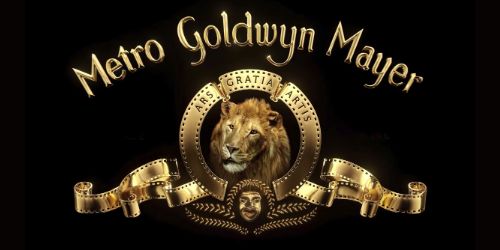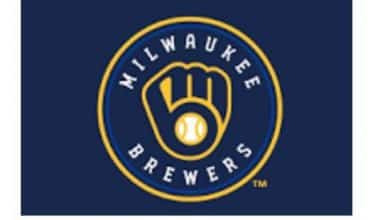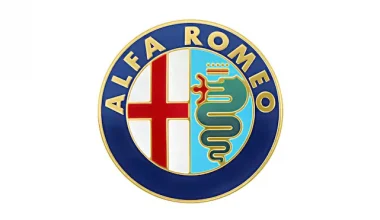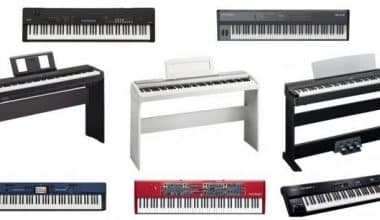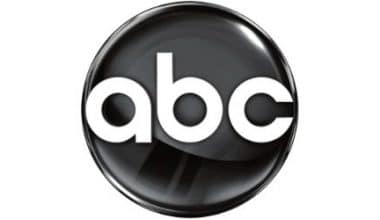MGM, which stands for Metro-Goldwyn-Mayer Studios Inc., is named after the three studios that business mogul Marcus Loew bought and merged in 1924. The company has been independent for more than a century, even though it has been through many major crises. In May 2021, MGM said that it would be bought by the tech company Amazon. This decision was made as the latest James Bond movie was getting close to having money problems. But, on the other hand, there is also a ton of history behind the company’s logo. In this article, we will discuss the history and evolution of the MGM logo. We will also cover everything you need to know about the brand.
Read Also: HBO LOGO: The Inspiring Story Behind the Brand, Revealed!!!
History of the MGM Logo
Of the three firms that made up Metro-Goldwyn-Mayer, only Goldwyn Pictures Corporation had a distinguishing logo. It was the one used as the foundation for the contemporary studio’s logo. The first version was made in 1916. It was made up of a lion’s head set in a ring of celluloid diafilm. The tape’s slack edges dropped down the sides. The word “trade” was on the left, while “mark” was on the right. The inscription “ARS GRATIA ARTIS” was at the top of the circle. This complex Latin phrase was a favorite phrase of a linguistics professor he knew, according to the author and advertising expert Howard Dietz.
The animal was inspired by a drawing on the cover of Columbia University’s student magazine, the names of the university’s sports teams, and the song Roar, Lion, Roar. The mask shown below was possibly added because Goldwyn’s first lion came from an African country. It’s a sort of homage to his ancestors. The design of fern-like leaves around the mask served the same purpose.
MGM purchased the historic Goldwyn brand in 1924. It evolved progressively while retaining its initial structure. Even today, one version of the lion in a cinema ring can be seen in the film’s opening credits. However, this is not the same animal that appeared on film in the late 1910s. Over the course of its century-long existence, the television studio has gone through nearly ten lions. Tanner, who debuted during MGM’s “golden era,” and the long-lived Leo with a short mane are two of the most well-known. Screensavers with different lions were used at the same time, which made it hard to figure out the chronology of the logos.
1924 – 1960
The studio’s name was written in two fonts on the text sign. For “Metro” and “Mayer,” a beautiful antique with short serifs was chosen, while “Goldwyn” was written in a cursive grotesque.
1924 – 1984
The inscription “Metro-Goldwyn-Mayer” was placed on a scroll with two torches around the edges in one version. At the summit stood a lion statue on a pedestal beneath an arch with the phrase “ARS GRATIA ARTIS.” The word “picture” was written at the bottom in a convex form. This insignia was only seen on rare occasions. It was most recently seen in the film “Nothing Lasts Forever.”
1939
Jackie worked for MGM from 1928 to 1956 and was in a lot of movies. She reminded me of the silent lion on the company’s logo, which looks like it might attack. The animal’s head was contained within a ring constructed of film tape. The tape was perforated on both sides and had the familiar phrase “ARS GRATIA ARTIS.” There were two fern or laurel branches at the bottom.
1964 – 1966
The head of the roaring lion was in a black ring with black ribbons going all the way around it. The Latin speech, like the plant decoration, has vanished.
1966 – 1982
MGM engaged the Lippincott agency in 1965 to change its image. The cooperation resulted in “The Stylized Lion,” a new printed logo. This version first appeared in the Grand Prix film and stayed in use until 1982. The designers used a technique called “negative space” to make a roaring lion’s head inside a circle. The surrounding black region formed the white lines and outlines. The abbreviation “MGM” was written at the bottom in the grotesque font Helvetica.
1982 – 1986
After purchasing United Artists in 1981, the studio changed its name to MGM/UA Entertainment Company. At the same time, the logo was changed to show a real lion inside a celluloid diafilm ring. The lower half of the circular frame featured an African mask, and the upper half featured the phrase “ARS GRATIA ARTIS.” A two-level inscription was beneath the image. The abbreviation “MGM/UA,” which employed a serif font, took up the first line. Just below, between two horizontal lines, was the hideous word combination “Entertainment Co.”
1984 – 1985
The lowest text has been deleted. The motto was also dropped, and the complete corporate name was replaced: “METRO-GOLDWYN-MAYER/UNITED ARTISTS.” The words “Entertainment Co.” have been put on an extra ribbon at the bottom. Without the holes, the ring resembled a heraldic scroll rather than a film.
1986 – 1987
The company changed its name and altered its logo in early 1986. It was the 1982 model, but with different lettering – no “UA.” The lion’s detailing has been slightly reduced.
1986 – 1992
After being called MGM Entertainment Company for only a few months, the studio changed its name to Metro-Goldwyn-Mayer. Its new graphic symbol was almost the same as the logo for Goldwyn Pictures Corporation. There was an exception, though; the edges of the tapes were cut. The mask was also bordered by a leaf decoration. A lion’s head ring was placed between the words “trade” and “mark,” with an arch-shaped firm name inscribed on top.
1992 – 2021
To make the image more obvious, the designers made the lines smaller. The words “TRADE MARK” as well as the registered trademark mark have been enlarged.
2011 – 2021
The “R” symbol in the circle is no longer visible. At the bottom, the large black abbreviation “MGM” was added.
2021 – Today
The studio debuted its new logo on March 8 by uploading it to YouTube, and it made its debut in mid-August with the film Respect. This time, an animated character took the place of the live, snarling lion. And the company did not simplify the design; rather, it turned the image gold and added a 3D look with the gradient. At the same time, all of the intricacies and elements are accurate to the original.
MGM Logo Font and Colors
The computer images depicted the real lion, Leo, MGM’s eighth. Because he was still an adolescent at the time of the first shot, he has a short mane. Leo appears on all of the studio’s emblems after 1982. The still pictures show his scowl, which was taken in 1957 for a movie splash screen. The company decided to make the design more modern by putting a fake lion in its place. The perforated bar survived not only as a nod to history but also as a nod to film art.
At least four different fonts are used in the present logo. The letters of the sentence “Metro Goldwyn Mayer” are rounded and have the same shape. Still, the second word is written in a font that looks like ITC’s Hadfield, and the first and second words are written in a font that looks like Goran Soderstrom’s Heroine. For the words “TRADE MARK” and “ARS GRATIA ARTIS,” other serif typefaces were used. The gradient gold color is reminiscent of MGM’s original Art Deco aesthetic.
A Comprehensive History
1924–1928 (Slat)
Goldwyn Pictures employed one of these lions. The lion’s name is unknown.
The lion was chosen as the company’s mascot by publicist Howard Dietz in 1916 as a tribute to his alma mater, Columbia University, which also has a lion as its mascot. Dietz was influenced most directly by the university’s battle song, “Roar, Lion, Roar.”
Slats, trained by Volney Phifer, was the first lion featured in the studio’s branding. Slats were born at the Dublin Zoo on March 20, 1919, and were originally named Cairbre (Gaelic for “charioteer”). Between 1924 and 1928, he appeared in all black-and-white MGM films. He Who Gets Slapped was the first MGM picture to have the logo (1924).
Unlike his successors, Slats in the logo did nothing but glance around, making him the only MGM lion who did not roar. Despite the fact that synchronized sound will not be used in motion pictures until 1927, it is said that Phifer trained the lion to roar on cue.
Slats died at the age of 17 in 1936. At the time, Phifer retired to his farm in Gillette, New Jersey, where he housed other Broadway animals. When Phifer died, he buried the lion on his farm and erected a plain slab of granite to memorialize the spot. Later, Phifer replaced the granite block with a pine tree planted right over the grave, with the roots “holding down the lion’s spirit.”
1928–1956 (Jackie)
Jackie was the second lion used in the MGM emblem and the first to roar. He was a wild lion cub taken from Sudan’s Nubian Desert in 1915 and educated by Mel Koontz.
Jackie roared/growled three times before looking off to the right of the screen (the lion’s left); in the early years that this logo was used (1928 – 1933), there was a slightly extended version in which the lion would return his gaze to the front a few seconds later after looking off to the right. This was recorded several years after he was filmed, and at least four distinct recordings of roars/growls were used, the first heard on a phonograph record for MGM’s debut sound production, White Shadows in the South Seas (1928).
Jackie replaced Slats in all black-and-white MGM pictures from 1928 to 1956, as well as the sepia-tinted opening credits of The Wizard of Oz (1939). He was also featured in front of MGM’s black-and-white cartoons, such as the Flip the Frog and Willie Whopper series made by the short-lived Ub Iwerks Studio for MGM, as well as the Captain and the Kids animations released by MGM in 1938 and 1939.
Read Also: WARNER BROS: History, Origin, and Recent Developments
A colorized version of the logo appears on the colorized version of Babes in Toyland (1934), also known as March of the Wooden Soldiers; an animated version developed with rotoscope debuted on the Captain and the Kids animation Petunia Natural Park in 1939. A still shot of the logo – sans growling – was used at the introduction of the movie Westward the Women and The Next Voice You Hear… (both 1950).
Jackie was in almost a hundred movies, such as the Tarzan series with Johnny Weissmuller and the MGM logo. Jackie also appeared in a well-known 1926 publicity still alongside a nervous Greta Garbo. In a short film from 1933, Jackie gets a bath from her trainer Mel Koontz while she is upset. The lion is also known to have lived through a number of accidents. This included two train wrecks, a ship sinking, an earthquake, and an explosion in the studio. A plane crash was the most notable accident.
Martin Jenson, a.k.a. Marty, was employed on September 16, 1927, to transport Jackie cross-country. The plane was a modified version of Charles Lindbergh’s Spirit of St. Louis, a B-1 Brougham. A glass-enclosed iron bar cage was installed behind the pilot’s seat. The plane took off from Camp Kearny Airfield, which is located near San Diego.
Read Also: PUNISHER LOGO: The True Meaning of the Controversial Logo, Revealed!!!
The plane, however, was overloaded because Jackie weighed 350 pounds. The weight led the jet to crash into the northern Arizona mountains. Marty and Jackie both survived the crash. However, because they need assistance, the two were left behind with milk, water, and sandwiches. Jackie was returned to MGM’s handlers while underweight and frail. Jackie earned the moniker “Leo the Lucky” as a result of her survival in these accidents.
In the early 1930s, MGM re-released some of its silent movies from before 1928 with new music and sounds. These movies included Greed (1924), Ben-Hur (1925), Flesh and the Devil (1926), and The Unknown (1927). The original Slats logo was changed to Jackie for these sound reissues, leading many film authorities to believe that the Jackie logo had been in use earlier than 1928.
In 1931, Jackie gave his final tour and retired to the Philadelphia Zoo. Jackie was discovered dead on February 25, 1935, by his zookeeper, John McCullen. The lion died as a result of heart difficulties. Jackie was brought from Philadelphia to Los Angeles, where taxidermist Thomas Hodges created a rug out of his skin. Francis Vaniman bought the rug and put it on the third floor of his house in McPherson, Kansas, along with other animal skins. This area later became the “African Room” in the McPherson Museum.
Numa (c. 1927–1928), Telly (1928–1932), Coffee (1932–1935)
From 1932 through 1935, one of the three lions was used for Technicolor test logos for early MGM color productions.
In 1927, MGM began experimenting with two-strip color short subjects, and in 1930, it began experimenting with animated cartoons. Three different lions were employed in these productions.
Even though Numa is hard to find, a few frames of the logo with this lion are in the public domain. He is known to have appeared in the silent color pictures of Buffalo Bill’s Last Fight (1927) and General Robert E. Lee’s Heart (1928). The former bestowed upon him the moniker Bill, while the latter is currently being restored by the Library of Congress.
Telly, the second lion, appeared in color MGM films between 1928 and 1932.
At the beginning of the 1928 movie The Viking, a longer version of the Telly logo is shown. The lion in this version has the same roar as Jackie. Telly appears in black and white in current prints of The Mysterious Island (1929), as the color version has been lost.
Coffee, the third lion, appeared in color films between 1932 and 1934, or 1935 for the Happy Harmonies shorts before production was switched to full three-strip Technicolor photography. The Cat and the Fiddle, which came out in 1934, used Jackie instead of Coffee because it had a few scenes in color but was mostly black and white, including the opening credits. The Cat and the Fiddle, on the other hand, displayed its “The End” title card over a Technicolor backdrop. An extended version of the Coffee logo appears at the beginning of the short Wild People (1932), with the lion screaming three times instead of just twice.
Tanner (1934–1956, 1963-1967)
Tanner, who was also trained by Mel Koontz, replaced Telly and Coffee in all Technicolor MGM pictures (1934-1956) and cartoons (1935-1958, 1963-1967, except for 1965’s The Dot and the Line).
In the 1939 movie The Wizard of Oz, the scenes in Oz were in color, but the titles and scenes in Kansas were in sepia-toned black-and-white, so Jackie was used instead of Tanner. Third Dimensional Murder (1941) was shot in 3-D and Technicolor, but the opening credits were in black-and-white, so Jackie replaced Tanner. Both The Picture of Dorian Gray (1945) and The Secret Garden (1949) had short scenes in color, but the rest of the movies, including the opening credits, were in black and white, so Jackie was used instead of Tanner. The Secret Garden, on the other hand, displayed its “The End” title card and cast list against a Technicolor backdrop.
Read Also: NINTENDO LOGO: The History Of The Old Video Game Console
Tanner roared three times in the logo; an expanded version of this logo appeared on the Color Tone and several early James A. Fitzpatrick Travel talks color shorts, with the lion roaring twice more.
Tanner was MGM’s third longest-serving lion, lasting a total of 22 years. His first feature film appearance came four years later, in 1938, before Sweethearts. He appeared following Jackie, who had been used for a total of 28 years, and the present lion, who had been used for 65 years. This was the most commonly used version of the logo throughout the Golden Age of Hollywood, despite the fact that color did not become the norm until the 1960s, and many movies were still filmed in black and white.
Tanner appeared in the films Countdown to Zorro (1936), Movie Maniacs (1936), Wee Wee Monsieur (1938), Three Missing Links (1938), You Nazty Spy (1940), and Hold That Lion! (1940). (1947). Tanner’s roar was also used as a sound effect in many MGM animated cartoons between the mid-1940s and the 1960s.
In 1953, when movies switched from Academy ratio to widescreen CinemaScope, Tanner and Jackie were both kept on. Tanner worked on color movies, and Jackie worked on black-and-white ones. For this change, the marquee beneath the ribbon design was removed, and the company name was placed in a semi-circle above the ribbon.
George (1956–1963)
George was in use from 1956 to 1963.
The seventh lion, George, was introduced in 1956 and had a thicker mane than the other lions.
The logo featuring George had at least three different variants. His most well-known film role was in The Wings of Eagles.
Leo (1957–Present)
Leo, the eighth and current lion, is by far MGM’s most often used, having appeared in nearly every MGM picture since 1957. Like Slats, Leo, was born in 1956 in Dublin Zoo, Ireland. He was also the youngest when MGM filmed him screaming, which explains his much smaller mane. It made its debut in the film Tip on a Dead Jockey.
Ralph Helfer trained Leo after he was purchased from animal dealer Henry Trefflich. In addition to his role as the MGM lion, Leo appeared in a number of other films, including the religious epic King of Kings (1961), The Lion (1962), Zebra in the Kitchen (1965), and Napoleon and Samantha (1972), as well as a memorable television commercial for Dreyfus Investments in 1961. Leo also appeared on the 1971–72 TV show The Pet Set, where he was gentle enough to let a blind adolescent girl pet him in one episode.
Read Also: Blackberry Brand: Lessons To Learn From the Rise & Fall of Blackberry
There were two variants of this logo: an “extended” version with the lion roaring three times, which was used from 1957 to 1960, and a “normal” version with the lion screaming twice, which has been used since 1960. In the Tom and Jerry cartoons made by Chuck Jones between 1957 and 1958 and published by MGM Animation/Visual Arts between 1963 and 1967, Tanner was used instead of Leo in the opening sequence. Three MGM films used a still-frame
In 1974, the logo was updated to commemorate MGM’s 50th anniversary. The usual film ribbon appeared on screen, with the phrase “Beginning Our Next 50 Years…” on a black background within the film circle; the phrase fades as “Metro-Goldwyn-Mayer” (above the ribbon) and “Golden Anniversary” (in place of the usual “Trade Mark”), both rendered in gold, fade in with Leo, who roars twice. This logo appeared on the majority of MGM films released in 1974–75.
After MGM bought United Artists in 1981, the logo was kept when the company was reorganized. The logo now read “MGM/UA Entertainment Co.”; this mark would appear on all MGM/UA films from 1983 to 1986, and again in 1987 on the 1985 film O.C. and Stiggs. The original lion roar sound, which was based on Tanner’s roar, was also replaced at this time by a remade stereophonic one by Mark Mangini. This latter version used tiger sounds, as Mangini later explained, “since lions don’t make those kinds of ferocious noises, and the logo needed to be fearsome and grand.” Poltergeist was the first film to use the new roar sound (1982). The same sound effect was also used for the “door ghost” near the end of the movie.
Read Also: DISNEYLAND LOGO: History and Evolution
From 1984 to 1985, MGM used a version of their main studio logo that was based on the print mark and had golden ribbons to celebrate their 60th anniversary. Above the ribbons were the words “Diamond Jubilee” in silver type, substituting the regular corporate name, and below the ribboning was the slogan “Sixty Years of Great Entertainment.” Inside the circle, the motto “Ars Gratia Artis” was deleted and replaced with the text “Metro-Goldwyn-Mayer/United Artists.” The laurels encircling the lower drama mask were removed, and the mask itself was raised up a little so that an additional golden ribbon with the text “Entertainment Company” below could be placed.
When the studio split MGM and UA in 1986, a new logo for MGM was made. The same gold ribbons from the “Diamond Jubilee” version were kept, and the text was repainted in the same color. The next year, a new “MGM/UA Communications Co.” logo was adopted, which would precede both the MGM and UA emblems until 1990. However, until 1992, both logos bore the byline “An MGM/UA Communications Company.” Mangini used digital audio technology in 1995 to mix Leo’s roar from 1982 with a few other roar sounds. The new sound effect was first heard in Cutthroat Island, which came out in 1995. This was done to give the roar more “muscle,” which an MGM executive reportedly found lacking previously, as well as to fit it into films with 5.1 surround sound. MGM’s internet address, “www.mgm.com,” was added to the bottom of the logo in 2001.
Read Also: DISNEY JUNIOR LOGO: What is the Logo History & All You Need to Know
In 2008, the ribbons, wording, and drama mask were redesigned in a more brilliant gold tone. Also, thanks to the work of Pacific Title staff, Leo’s image was digitally restored and enhanced: first, a three-dimensional model of Leo’s mane was designed, and then composited and blended onto the lion’s actual mane; second, the tips of the lion’s ears were digitally remodeled, so that the tip of his left ear would now cross in front of the film ribbon, in an effort to give the logo more depth.
The extended “three-roar” version of Leo’s video was used for the restoration process, derived from the master negative print of 1958’s Cat on a Hot Tin Roof, as the original, raw film of the lion, which was originally scheduled to be used for the restoration, was thought lost by this point. It would have to be cut down to show the lion roaring only twice for MGM’s upcoming feature films. The design of the new logo was based on MGM’s then-current print logo, which had been introduced in 1992.
The domain name was also abbreviated to “MGM.COM.” Sound editor Eric Martel reworked the lion’s roar once more, retaining the majority of the original 1982 sound sources. The 1995 roar, however, was utilized beginning with The Taking of Pelham 123 (2009). The new logo debuted in conjunction with the release of the James Bond film Quantum of Solace.
Read Also: FRUIT OF THE LOOM LOGO: What is the Real Logo?
Shine Studio was hired in 2012 to change the logo and make it move in stereoscopic 3-D. Leo the Lion is shown surrounded by a digitally moving golden filmstrip as the lion’s eye zooms in and out. Shine made all of the logo’s parts over in 3-D and put them on different planes to add depth and drama. For example, the words “Ars Gratia Artis” move from right to left.
As Leo roars and the corporate name is brought in from above to center the top screen, the 1995 roar and the digitally restored and enhanced 1957 video are utilized, completing the logo sequence. MGM’s website address was removed because, as of 2012, MGM is no longer a self-distribution entity, but rather a production company. This logo appeared for the first time in the 2012 James Bond film Skyfall.
Leo has been utilized since 1957, and his CGI animated form debuted in 2021.
MGM unveiled an updated logo on March 8, 2021, with Leo now being CGI animated and based on footage from 1957, the first major redesign for the mascot in over six decades. The most recent version adheres to the company’s typical gold style, removing sepia tones and modernizing the logo by sharpening the film roll, mask, and writing. The most obvious change is that the brand’s new monogram uses the classic MGM logo font instead of the blocky letters that are associated with MGM Resorts.
Read Also: NISSAN LOGO: Why Did Nissan Change Its Logo (Invaluable 2022 Tips)
Furthermore, the motto now displays its English translation, “Art for the Sake of Art,” before returning to its original Latin motto. Along with the re-used 1995 roar, it also had a proper fanfare composed by Sounds Red. MGM collaborated with Baked Studios in Culver City, California, on the new style. While the new logo, like the previous ones, was supposed to be unveiled with the James Bond film No Time to Die, it was repeatedly pushed back from November 2019 to October 2021 due to the ongoing COVID-19 pandemic. It instead made its debut on August 13, 2021, with the Aretha Franklin biopic Respect.
On January 19, 2022, a special variation was published to commemorate the 60th anniversary of the James Bond franchise, with the logo stretching out farther to make room for the “60 Years of Bond” logo, which appears next to it on the right. On January 21, 2022, it premiered in front of the IMAX re-release engagement of No Time to Die, and it appeared in Ron Howard’s Thirteen Lives and the documentary The Sound of 007.
Lion Stylized (1968)
The MGM Grand Las Vegas sign’s updated stylized lion
The stylized lion, on the other hand, was retained by the studio as its print logo, appearing on theatrical posters and MGM Records division studio advertising, as well as appearing at the end of credit rolls following most MGM movie releases during this time period, which lasted until 1982. The MGM Grand casinos later used it. MGM Resorts International’s parent business uses a refined version of it as its logo.
The MGM Secondary Logo
MGM also employed a secondary logo, which can be seen in the opening and closing credits of the majority of classic MGM films. From 1923 to 1925, this design was used as the Metro-Goldwyn Pictures logo. The logo depicts a reclining lion (from the side) atop a pedestal with the words “A Metro-Goldwyn-Mayer Picture” inscribed on it. Behind the lion is a semicircular film ribbon with the motto “Ars Gratia Artis” (“Art for the sake of art”), similar to the film ribboning of the company’s primary logo. Torches are placed on either side of the pedestal. From the mid-1920s through the early 1960s, this supplementary emblem appeared in the opening and closing titles of most MGM films, before being transferred to the main film credits until the early 1980s. The last time we saw this logo was in the 1994 film That’s Entertainment! III.
Many of Hal Roach Studios’ short subjects from the late 1920s and 1930s, such as Our Gang and Laurel and Hardy, utilized a variation of the secondary logo in their closing titles. This variation included a lion cub on a pedestal, staring directly at the observer.
Also, the opening credits of a lot of MGM movies from the late 1930s and early 1940s were shown against a background of a relief carving of a sleeping lion, like the one on the secondary logo. This type of credits sequence is used in a lot of movies, including the 1938 version of Charles Dickens’s classic A Christmas Carol and Greta Garbo’s Ninotchka. In the late 1950s, this reclining lion image was used as the emblem for MGM Television.
Related Articles
- The All-Time Biggest Roulette Wins
- SMALL SCALE BUSINESS IDEAS 2022: (50ideas +Business plans)
- COLLEGE GRANTS AND SCHOLARSHIPS: List of Grants for College Students and Adults.
- LION LOGO: Cars And Brands With Lion Logo
